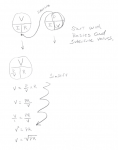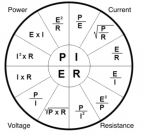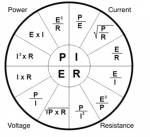Bigbri0104
Member
- Location
- New Jersey
- Occupation
- Student
Hello Everyone,
I'm new to the forum. I'm currently taking electrical vocational classes at night. In our night class we were calculating electrical circuits using Ohms law and I wanted to find out, why voltage is squared when calculating the known load in a parallel circuit?
In the question the voltage and power were given. The question was taking out of Mike holts electrical theory book figure 9-21
Just curious.
Thanks
I'm new to the forum. I'm currently taking electrical vocational classes at night. In our night class we were calculating electrical circuits using Ohms law and I wanted to find out, why voltage is squared when calculating the known load in a parallel circuit?
In the question the voltage and power were given. The question was taking out of Mike holts electrical theory book figure 9-21
Just curious.
Thanks




